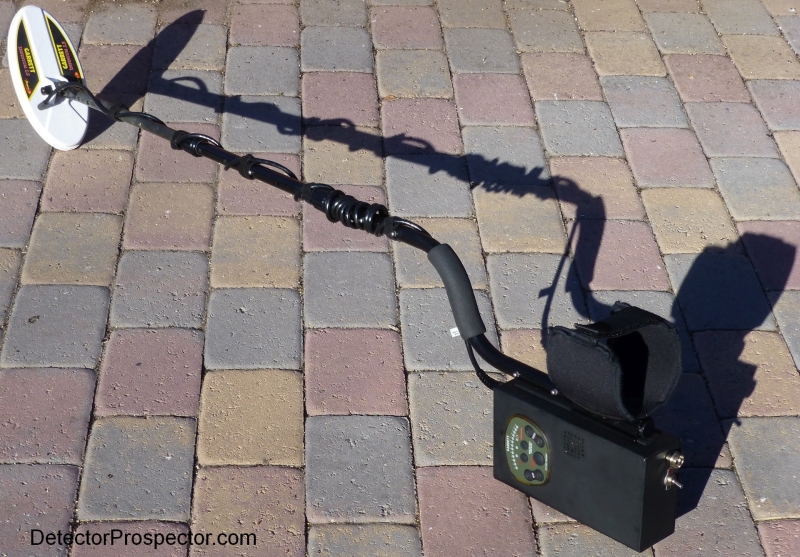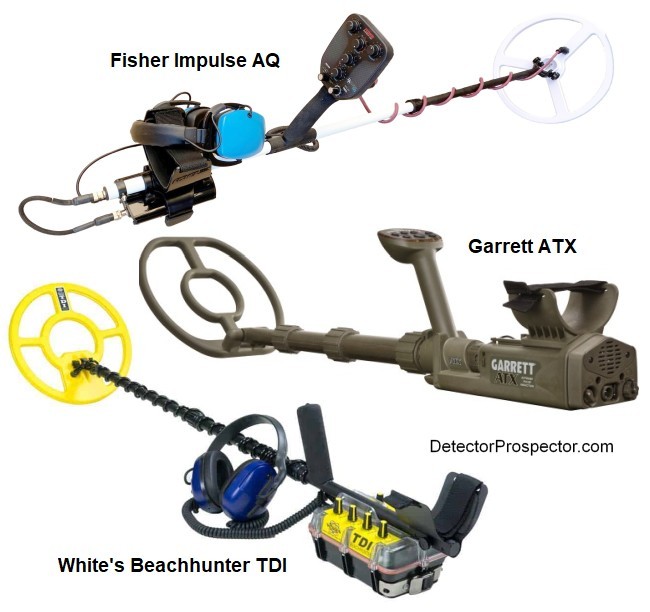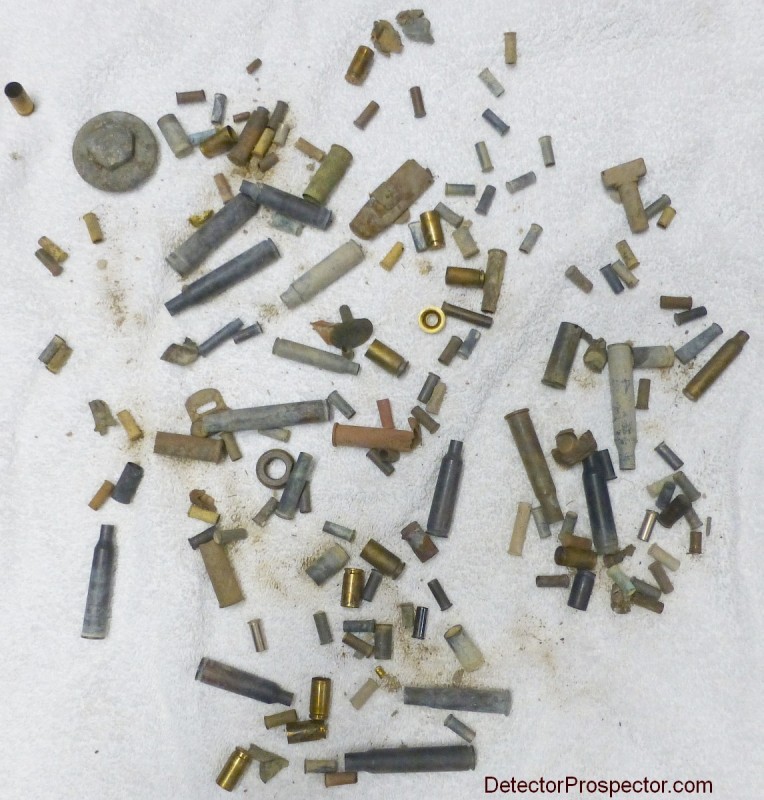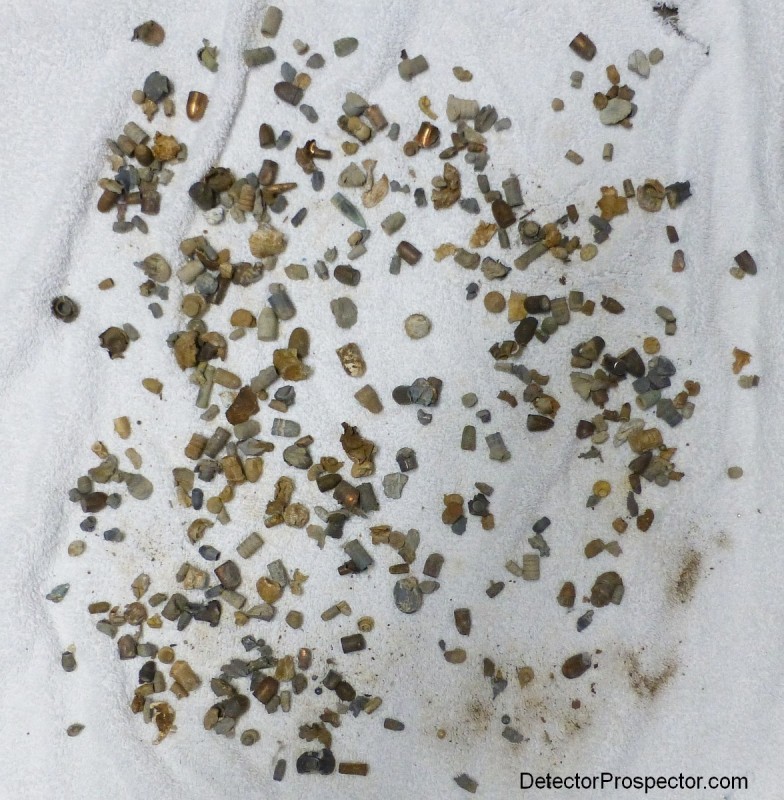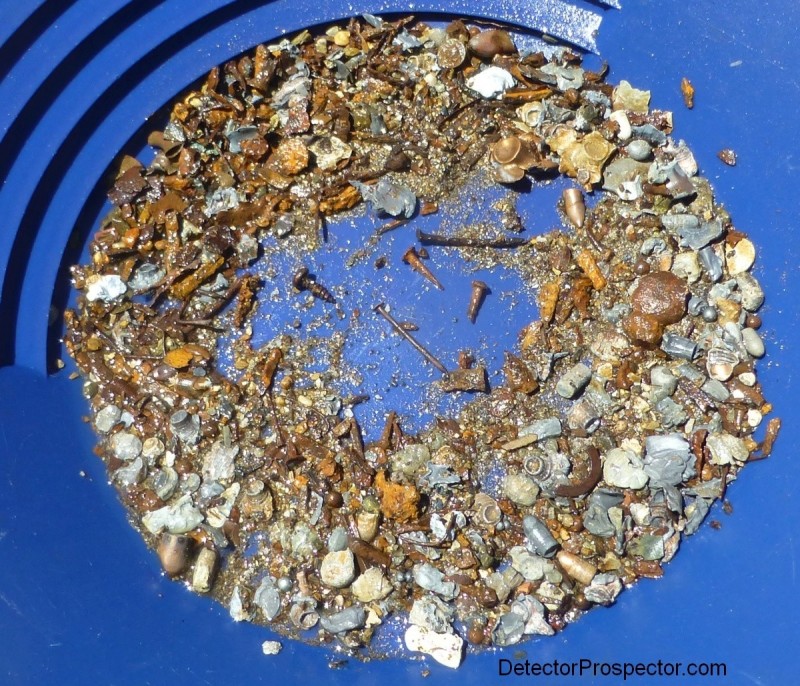-
Posts
19,761 -
Joined
Content Type
Forums
Detector Prospector Home
Detector Database
Downloads
Everything posted by Steve Herschbach
-

Where Is Fisher On The Impulse?
Steve Herschbach replied to PPP's topic in First Texas - Bounty Hunter, Fisher & Teknetics
This is without a doubt the strangest introduction of a new detector by a major manufacturer I have ever witnessed in 45 years. It reminds a bit of Troy, where Fisher made detectors for Troy Custom Detectors, but Troy did the design, marketing, and sales. Other than the Fisher name on the box, this is like an Alexandre Detector, made by Fisher but designed and marketed by Alexandre. As far as guesses... yours are as good as mine. -

It Doesn't Get Any Better...
Steve Herschbach replied to goldbrick's topic in Metal Detecting For Coins & Relics
That’s just fabulous Merton, congratulations! -
PI detectors designed to run off 8 AA batteries are at a distinct disadvantage compared to high power pi detectors like the GPX. There is a reason for that brick sized Lithium Ion battery on a backpack. Here an ATX struggles to see an item at 18” the GPX sees with room to spare. And it is a die-hard Garrett dealer doing the test.
-

New From Garrett In 2020?
Steve Herschbach replied to Steve Herschbach's topic in Garrett Metal Detectors
Something is in the works at First Texas, Garrett, Minelab, Nokta/Makro, White's, and any other detector company that wants to stay in business. -
GPX is a high power PI. When you get yours working in 6 feet of saltwater let me know! 😂 I always thought it odd the worlds largest manufacturer of pulse inductions detectors has basically ignored the waterproof PI market. The floats like a cork SDC with its hardwired coil really does not count. I always wanted a GPX 5000 stripped to salt mode stuffed in a CTX 3030 housing. Then we would not be having this discussion. As it is the GPX is in a class of it's own so far and great for those who want to use one on the beach but not in the water. Frankly I don't want a GPX control box anywhere near saltwater for extended periods of time, but that's just me.
-
Completely new for Bounty Hunter for 2020, the Time Ranger Pro appears to be a Fisher F19 in sleek new clothing. This detector is available now. The Time Ranger Pro is a 19 kHz VLF metal detector aimed primarily at coin, jewelry, and relic detecting. The Bounty Hunter Time Ranger Pro is a variant of the 19 kHz Fisher Gold Bug Pro and so it also is very good at gold prospecting. All coils for the Fisher Gold Bug Pro, F19, and Teknetics G2+ are compatible with the Time Ranger Pro. Bounty Hunter Time Ranger Pro metal detector Bounty Hunter Time Ranger Pro control panel Preliminary information subject to change: FeTone, Adjustable Iron Audio Enhanced V-Break, Tone Discrimination System Notch Window with Adjustable Notch Width Backlit Display (Backlight) Computerized GROUND GRAB, One Touch Ground Balance with Manual Override Unmatched Target Separation in Iron & Trash Continuous Ground Condition Readout: Ground Phase value indicates type of mineralization / Fe304 graphic indicates amount of mineralization Ground balance all the way to salt Static All Metal Pinpoint with Depth Indicator 19 kHz Operating Frequency 7" x 11" Waterproof DD Searchcoil Ultra-Lightweight, only 2.6 lbs. (1.1 kg.) New For 2020 - Bounty Hunter Time Ranger Pro Bounty Hunter Time Ranger Pro Owner's Manual First Texas (Fisher) Metal Detector Forum
-
The ATX was my favorite Garrett ever. I finally sold it though and am boycotting Garrett over their refusal to make a Garrett LTX. I've had money burning a hole in my pocket for years to get a dry land ATX that weighs less and uses regular coils. But since Garrett refuses I'll take a 4.5 lb Fisher Impulse instead of another 7 lb ATX. If the Impulse has exactly the same performance as my old ATX and simply weighs 4.5 lbs instead of 7 lbs I'll be a happy detectorist. And if extra coils come out for the Impulse that cost less than $500 like ATX coils I will be happier yet. I have never been so frustrated with a company over a detector as I am with Garrett and the ATX. A truly fine PI circuit hobbled by the housing. If they had put it in a proper dry land housing with regular coils they could have put a real fire under Minelab in the gold prospecting market. The window for opportunity is now closing though, and the opportunity will soon be lost for Garrett. So sad. Anyway, that's my low bar. At least equal the ATX for performance, and weigh less, and I will be very satisified. If the Impulse AQ can't do that then Fisher will have wasted a lot of time and money.
-
Some people think a PI detects a lot deeper than a VLF and in the case of a very high power PI that can be true. But for what I would call mid-power PI detectors like the TDI SL or Garrett ATX, running off 8 AA batteries, the depth in low mineral ground running the same size coil is not much different than a good VLF. Assume just for illustration that a White's MXT with 12" coil and White's TDI SL with 12" coil get the same depth in mild ground on one particular test target. Now we have a magic dial and can turn up the ground mineralization. As we increase the mineralization, both detectors lose depth. The MXT loses depth at a faster rate however. I can't give you an exact ratio, but you can reach a point where the TDI now goes much deeper than the MXT. Yet the TDI is still getting less depth also.... it just does not lose as much depth as quickly as the MXT. It is also the case that with a PI if you have no ground balance filter engaged you can get the best depth in low mineral ground. Simply engaging the ground balance filter immediately robs a little depth. However, by engaging the control you do better in high mineral ground by comparison to the MXT. Whether you engage or disengage the ground balance circuit depends on the ground you are in. PI detectors do best by comparison to VLF detectors when ground conditions are the worst. The milder the ground, the less good a PI looks by comparison to a good VLF, to the point where you are better off with a good VLF due to the superior discrimination. Where I am in Nevada a White's GMT or Goldmaster 24K or even MXT is a better all around gold prospecting detector than a White's TDI SL in a lot of the desert soils due to the mild ground conditions, and the hot VLF detectors can detect tiny gold nuggets a TDI can't see even in direct contact with the coil. To sum up, the Impulse AQ will shine best where beach conditions are the worst. In general sands derived from volcanic activity and granitic rock, with high magnetic mineral content. People in mild sand derived from coral... not so much.
-
I have to tell you Fred that “I’m not very smart” self talk bothers me. You are not dumb so stop that nonsense. The gold prospecting version of the Impulse is really barely more than a rumor. People in the know say testing is underway so we know it’s pretty much real, but even detectors undergoing testing often never come to market, so it is not 100%. We assume it will share the general look and feel of the Impulse AQ, but that is just an assumption. Personally I think making any detector without wireless these days is not forward thinking. Even the Impulse AQ would have benefitted since the majority of users will probably be beach walkers and shallow wading types. The fact is the Impulse AQ is not wireless and Fisher has not made a wireless detector yet so it’s a fairly low bet I’d say for the prospecting model. Maybe Alexandre can reveal more.
-

Show Your Expected Gold Targets
Steve Herschbach replied to MannyScoot's topic in Detector Prospector Forum
How do you know what the targets were that you did not dig up? Do you believe 100% of the targets you did not dig were not gold? That you have a 100% accuracy rate? If not, what percent is acceptable to you? If you skip 100 targets is it ok for ten of those to be gold? Five? Two? I’m not being critical here, just curious. I have skipped a lot of targets over the years for various reasons, but I am certain that I have left gold in the ground as a result. I know this because I have dug plenty of “nail signals” that turned out to be gold. -
Why use a PI on a low mineral beach? Unless you have an extra large coil there generally is no real depth advantage over a good VLF in low mineral ground and a VLF has far better discrimination. I don’t even see the sense in testing one of these in Florida, as is being demanded by many people. This is a detector for the west coast or Hawaii, not Florida white sands. Florida is one of the worst possible test locations I can think of.
-
It’s a PI vs VLF thing. In low mineral beaches there is no huge depth advantage for a PI. A pulse induction loses less depth in highly mineralized conditions and so has a good depth edge if that is what you have to deal with. With a PI the price you pay is digging way more trash.... basically dig it all. VLF you have discrimination. Florida white sands.... not much depth advantage to PI. West cost beaches and Hawaii, there is a depth advantage. And consider whether you like digging everything or want discrimination.
-
It would be great at some point to hear if you end up preferring one or the other. Happy Hunting!
-

Gold Pan History?
Steve Herschbach replied to tvanwho's topic in Gold Panning, Sluicing, Dredging, Drywashing, Etc
Rocks don’t always float to the top. Many sink. It just depends if they are dense or not and the composition of the finer material. And panning involves washing off the light stuff, leaving rocks behind. -
I agree Alain about a chart, and I have a good start on one, but without actually having a detector it's only educated guesswork on my part based on what Alexandre and LE.JAG have posted so far. The one I posted was just a quick and dirty illustration. Hopefully they or Fisher will do something official before release, otherwise you can be sure people will eventually construct some at a later date. I was hoping for one detector that would do both land and sea, something I liked about my ATX. To be honest I think Fisher will have a hard time making a detector more powerful than a GPX 4500 or GPX 5000 let alone a GPZ 7000, and few people who already own those are willing to give up any power, even if the detector is lighter and costs less. Minelab means gold prospecting to a lot of people so Fisher has a tough road ahead there, and they have let Minelab have lots of advance notice what to expect.... I doubt the engineers down under are asleep at the wheel. The AQ model however has only a couple detectors, the Garrett ATX and Beachhunter TDI, that are truly equivalent product. For me at least, having none of the three at the moment, the choice is pretty clear. I am fed up with 7 lb detectors that have $500 coils, and the Impulse, using the TDI as a starting point, simply has to be better, or Fisher has wasted a lot of time and money. I sent Dave Johnson a TDI (big box version) years ago and Carl worked at White's so they know what they need to beat to succeed. Fisher Impulse AQ vs Garrett ATX vs White's TDI Beachhunter
-

Show Your Expected Gold Targets
Steve Herschbach replied to MannyScoot's topic in Detector Prospector Forum
-

Nuggeteer Anti Inteference 12 X 4 On Tdi Pro
Steve Herschbach replied to karelian's topic in White's Metal Detectors
Too bad it is such a poor translation to video, but the information presented is still just as good. -
Hi Alain, I went ahead and deleted the post and the chart. I put several disclaimers in the post that the chart was for conceptual purposes and was not intended to create an absolutely detailed, accurate, and definitive target response chart. I was assuming some degree of interpretation/interpolation by the viewer. Part of the problem is it is being taken out of the context of everything I have posted on the subject in the last ten days. I explained previously in this thread ahead of the chart that ferrous covers the entire range so I obviously agree with your conclusion since I have explained that exact thing so people would know it to be the case. I included both ends of the ferrous range in the chart and did actually include a portion of the bottle cap range that you must have missed. Long story short since the chart is being taken as definitive instead of conceptual despite the disclaimers, leaving it up is misleading or confusing people, and so deleting it it is probably for the best. I halfway knew when I posted it this was going to happen.
-

Coilteks New SDC Coil
Steve Herschbach replied to Motherlode Mike's topic in Minelab Metal Detectors
It’s almost enough to make me want to get an SDC and gut the thing out, put it in a real detector box and rod combo, so I can use coils like this the way they were meant to be used. I’d love an SDC configured like a Eureka Gold with a set of coils like this. -

Simplex+ Speaker Went Out
Steve Herschbach replied to Ridge Runner's topic in Nokta / Makro Metal Detectors
USPS Ground is a lot less expensive but can take forever. Like weeks instead of days if you get unlucky. Apparently they wait until they get a full truck. And it can only be done in person at the Post Office. They must not like people using it because it is not offered as an online option. I generally use Priority Mail but from Nevada I have learned that going East, once the box crosses the Mississippi, the cost triples. Seriously, an $18 box will go up to around $60. It’s become a huge issue when selling stuff online now.

